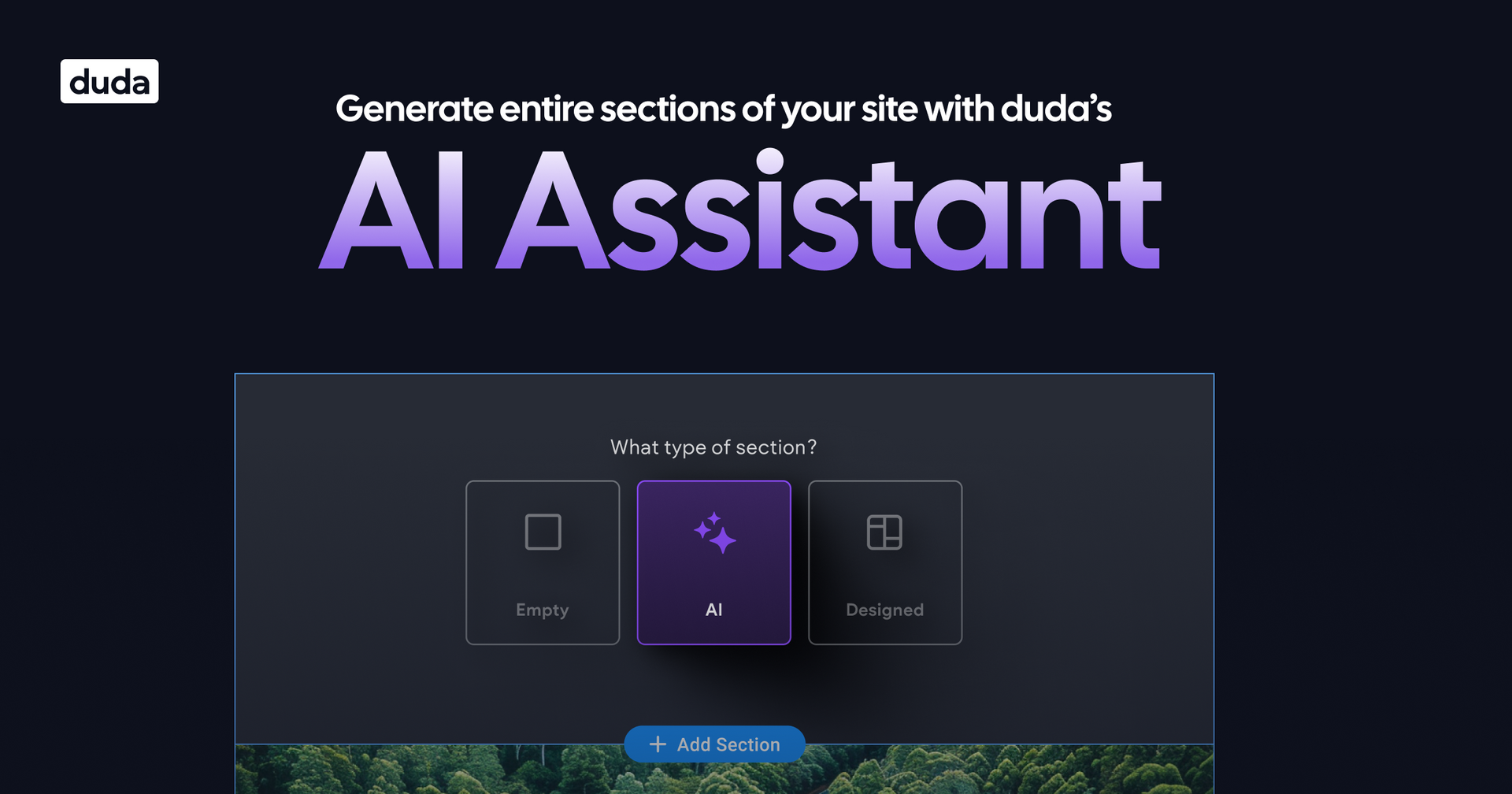Duda, a leading website builder for digital agencies and SaaS companies, today unveiled new features for its AI Assistant: AI sections and AI alt text. These additions, alongside Duda's recently introduced AI SEO tool and AI content creation tool, establish Duda's AI Assistant as the only solution embedded in a website platform that is designed specifically for agency workflows, empowering digital marketing agencies to launch high-performing websites at scale at unparalleled speeds.
Duda's AI sections tool automatically generates new site sections with suggested design, layout, copy, and images from a short user-provided prompt in just a few clicks. This feature drastically reduces the time needed to lay out the page, write copy, and select images. Now, content sections can be tailored and stylized in seconds.
Similarly, Duda's AI alt text tool boosts productivity by enabling the creation of alt text for all site images at once. Users can generate alt text in multiple languages for images lacking tags or for all site images, streamlining the process of optimizing websites for SEO and accessibility.
"Duda's AI Assistant is a transformative tool for agencies, supercharging their productivity to build high-performing websites at scale," stated Duda CEO and Co-founder, Itai Sadan. "By accelerating the website development process, the AI Assistant helps agencies deliver better client outcomes with the team they already have. This not only improves client retention, but also allows agencies to expand their market reach, serve a more diverse range of clients, and create a path to upsell more advanced services."
In 2023, Duda released its
AI Content and
AI SEO assistant tools. The AI content creation tool allows users to produce relevant, contextual web copy, optimize existing content, and ensure text alignment with the desired design and tone — all directly within the Duda platform. The AI SEO tool, launched in late 2023, simplifies SEO metadata creation and site optimization by allowing agencies to generate meta titles and descriptions for all sites pages from a central dashboard.
Designed with agencies and SaaS companies in mind, Duda is the only website building platform that offers client management features for its AI Assistant. This means that agencies can stay in control of their clients' experience and manage their level of access, deciding which AI tools clients can have access to. Agencies can use Duda’s AI Assistant to support the offering of additional services such as SEO or content, increasing revenue, and client stickiness and retention.
Josh Neimark, CEO at
Fix8 Media, a website design and development agency, highlighted the value of Duda's AI Assistant. "It's an indispensable solution that fills a critical gap in the industry's toolkit," Neimark said. "It allows us to generate SEO metadata up to nine times faster and get client sites live faster with AI content population, so we can offer comprehensive services to every client, regardless of budget. We also use the AI Assistant to speed up our internal workflows and offer access to the tool as an upsell to clients, so they can create new content and optimize new pages on an ongoing basis."
Sadan added, “The rapid adoption of AI has made one thing clear: embracing AI is not a choice, but a necessity to stay competitive. Duda’s AI Assistant gives agencies a formidable advantage – accelerating the entire web building process from content creation to SEO. Our suite of AI tools is essential for any agency looking to deliver superior digital experiences efficiently. And we’re just getting started – more to come on the horizon.”
For more details on Duda’s AI Assistant, visit
here.






